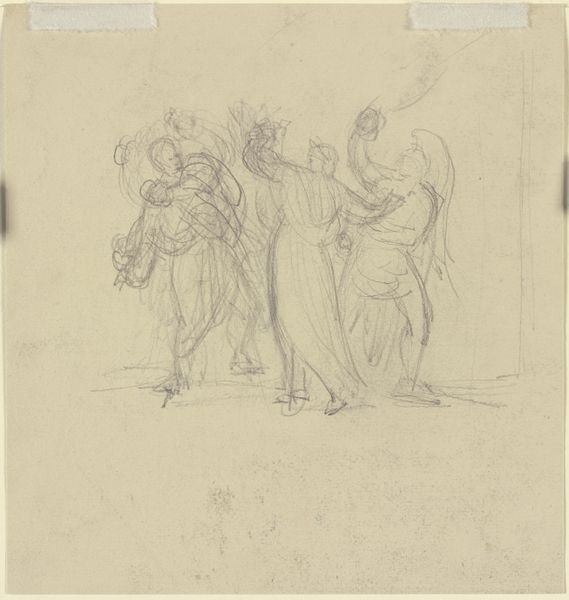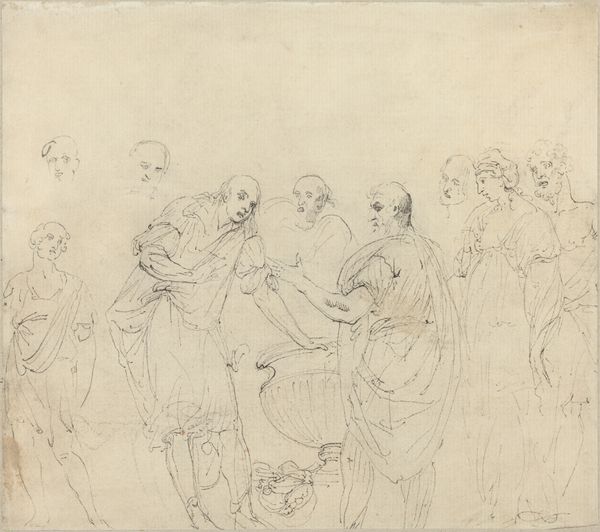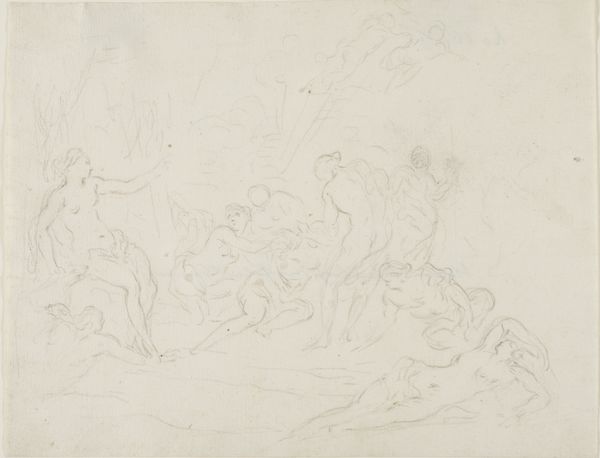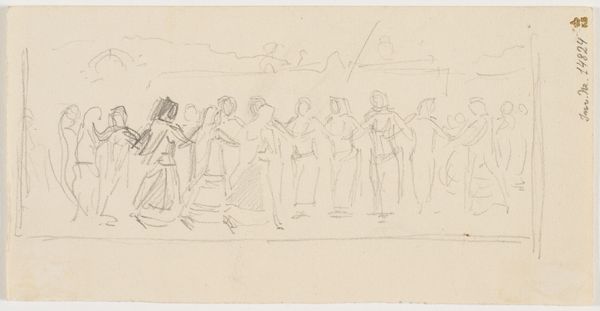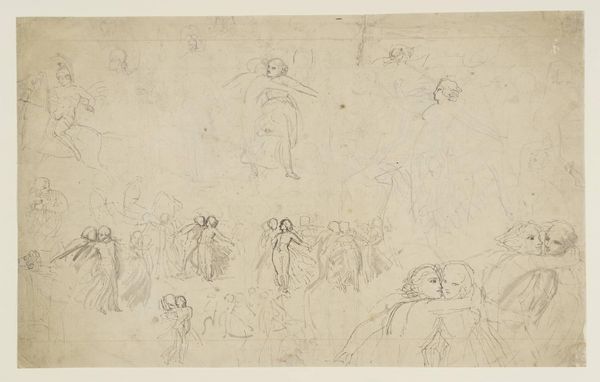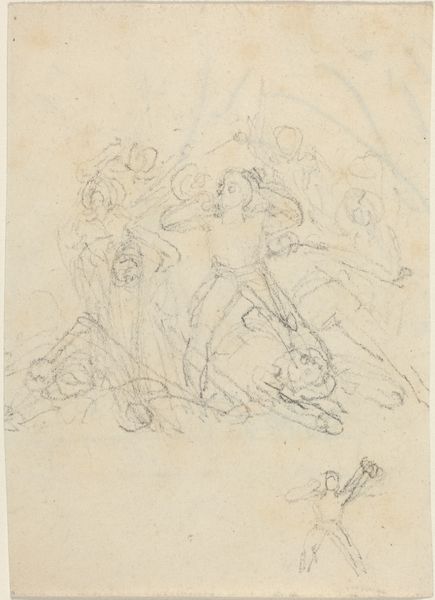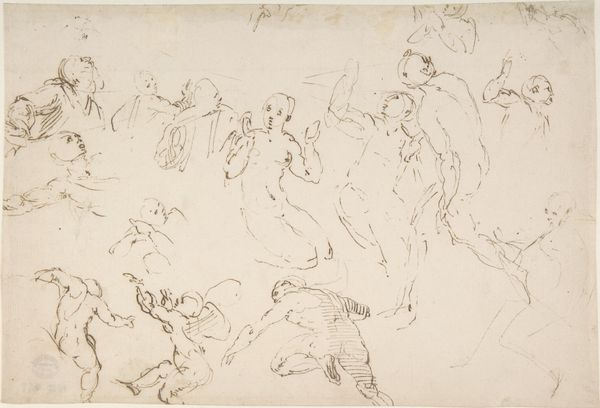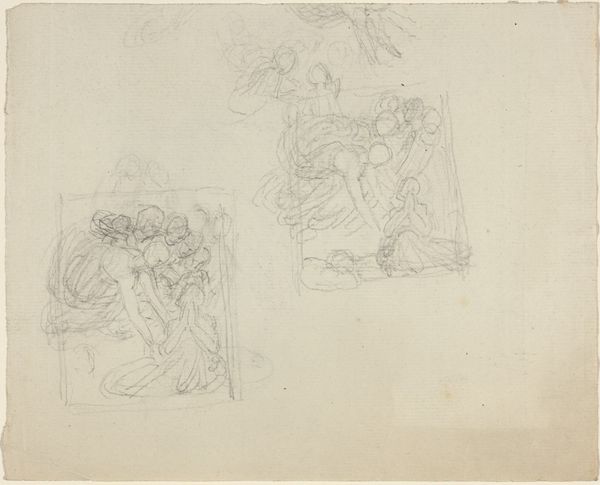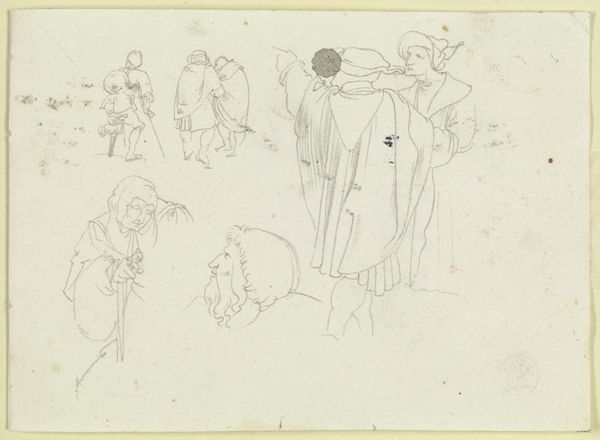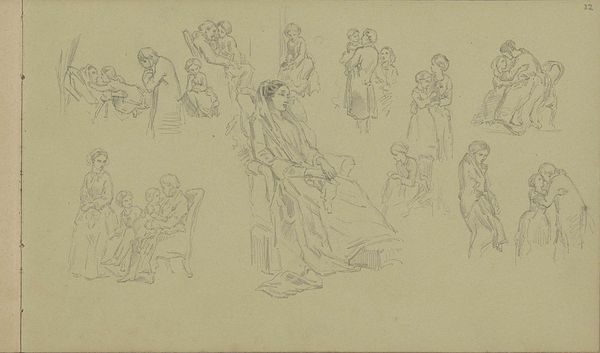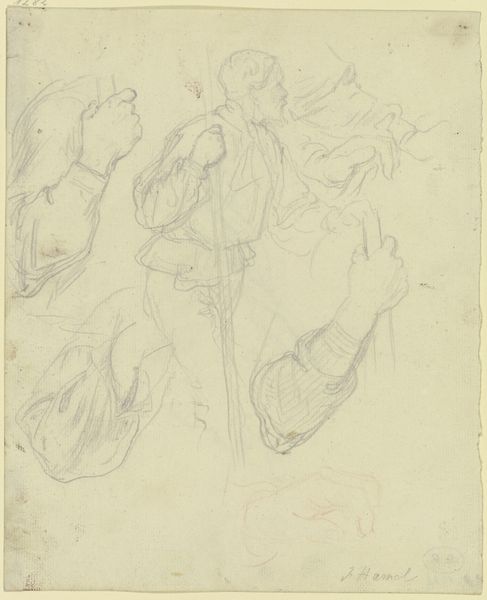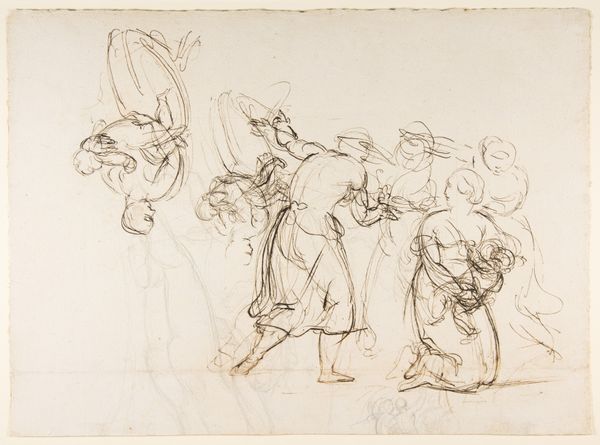
Tre figurgrupper: Mand og liggende hest. To orientalere. To kvinder 1746 - 1828
0:00
0:00
drawing, pencil
#
portrait
#
drawing
#
pencil sketch
#
figuration
#
pencil
#
genre-painting
Dimensions: 144 mm (height) x 216 mm (width) (bladmaal)
Editor: This is "Tre figurgrupper: Mand og liggende hest. To orientalere. To kvinder," a pencil drawing by C.A. Lorentzen, dating from 1746 to 1828. It’s at the SMK – Statens Museum for Kunst. What strikes me is the seeming casualness of the groupings, but I wonder what story they are meant to be telling, if any? What do you see in this sketch? Curator: What strikes me is the symbolic weight carried by these loosely rendered figures. Note the deliberate placement, as if stages in a narrative tableau. The man tending the reclining horse whispers of domestication and power, the harnessing of primal energy. And those "orientals"—consider how the exotic was often depicted: veiled, mysterious, a symbol of the unknown, sometimes threatening, always alluring. And the women; a pair in classical dress possibly? Editor: The orientals appear almost to be arguing; but who were "orientals" during that period, from Lorentzen’s point of view? Curator: Ah, precisely. This is where history informs image. To Lorentzen, an "oriental" likely represented the Ottoman Empire, North Africa, perhaps even Persia, all lands imbued with a potent mix of fear and fascination for the European imagination. The sketch reduces persons to symbols, representing a cultural understanding of the exotic "Other." Look closer—aren’t they stock figures of theatrical comedies, or allegorical actors placed to guide interpretation, to influence our European perspective of them? Editor: So, the artist might be playing with stereotypes instead of documenting specific observations? Curator: Precisely. Are they individualized? Do we perceive agency? Or merely costumed figures enacting a familiar, orientalist drama. And in their styling, aren't the grouping of women in keeping with typical idealized versions of women in this era, almost decorative in how they are framed? Editor: I see. So, what appears at first glance as a casual sketch reveals complex cultural and historical assumptions embedded within. Curator: Yes, exactly. And this small sketch gives us a glimpse of not just artistry, but cultural memory, still vibrant within these lines. Editor: That’s really changed my perspective. I wouldn't have thought of all of those considerations looking at it on my own!
Comments
No comments
Be the first to comment and join the conversation on the ultimate creative platform.

